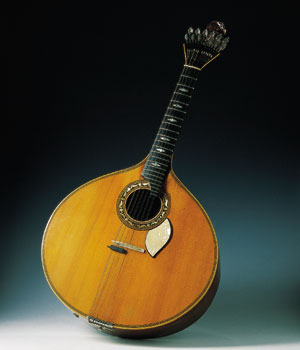

 |
 |
 |
 |
 |
The Beginning
Amalia's performances and choice of repertoire pushed Fado's boundaries and helped redefine it and reconfigure it for her and subsequent generations. In effect, Amalia wrote the rulebook on what fado could be and on how a female singer or Fadista should perform it, to the extent that she remains an unsurpassable model and an unending source of repertoire for all those who came afterwards. Amalia also remains the sole truly international star to have ever come out of Portugal, with an extensive international career between the 1950s and the 1970s, although in an era where such efforts were not as easily quantified as today. After a few years of amateur performances, Amalia's first professional engagement in a fado venue took place in 1939, and she quickly became a regular guest star in stage revues. There she met Frederico Valerio, a classically trained composer who, recognising the potential in such a voice, wrote expansive melodies custom designed for Amalia's voice, breaking the rules of Fado by adding orchestral accompaniment. Her Portuguese popularity began to extend abroad with trips to Spain, a lengthy stay in Brazil (where, in 1945, she made her first recordings on Brazilian label Continental) and Paris (in 1949). In 1950, while performing at the Marshall Plan international benefit shows, she introduces April in Portugal to international audiences (under it's original title "Coimbra").
The Middle Years
In 1954, Amalia's international career skyrocketed through her presence in Henri Verneuil's film The Lovers of Lisbon (Les Amants du Tage), where she had a supporting role and performed on screen. By the late 1950s the USA, England and France had become her major international markets (Japan and Italy followed suit in the 1970s); in France especially, her popularity rivaled her Portuguese success, and she graduated to headliner at the prestigious Olympia theatre within a matter of months. Over the years, she performed nearly all over the world going as far as the Soviet Union and Israel. At the end of the 1950s, Rodrigues took a year off. She returned in 1962 with a richer voice, concentrating on recording and performing live at a slower pace. Her comeback album, 1962's Amália Rodrigues, was her first collaboration with French composer Alain Oulman, her main songwriter and musical producer throughout the decade. As Frederico Valério before him, Oulman wrote melodies for her that transcended the conventions of Fado. Rodrigues did not shy away from controversy: her performance in Carlos Vilardebó’s 1964 arthouse film The Enchanted Islands was better received than the film, based on a short story by Herman Melville, and her 1965 recording of poems by 16th century poet Luís de Camões generated acres of newspaper polemics. Yet her popularity remained untouched. Her 1968 single Vou Dar de Beber à Dor broke all sales records and her 1970 album Com que Voz, considered by many her definitive recording, won a number of international awards.
The Later Years
During the 1970s, Rodrigues concentrated on live work, and embarked upon a heavy schedule of worldwide concert performances. During the frenetic post-April 25, 1974 period she was falsely accused of being a covert agent of the PIDE, causing some trauma to her public life and career. (In fact, during the Salazar years, Rodrigues had been an occasional financial supporter of some communists in need.) Her return to the recording studio in 1977 with Cantigas numa Língua Antiga was received as a triumph. The 1980s and 1990s brought her enthronement as a living legend. Her last all-new studio recording, Lágrima, was released in 1983. It was followed by a series of previously lost or unreleased recordings, and the smash success of two greatest hits collections that sold over 200,000 copies combined. Despite a series of illnesses involving her voice, Rodrigues continued recording as late as 1990. She eventually retreated from public performance, although her career gained in stature with an official biography by historian and journalist Vítor Pavão dos Santos, and a five-hour TV series documenting her fifty-year career featuring rare archival footage (later distilled into the 90-minute film documentary, The Art of Amália). Its director, Bruno de Almeida, has also produced Amália, Live in New York City (a concert film of her 1990 performance at New York City Town Hall). On October 6, 1999, Amália Rodrigues died at the age of 79 in her home in Lisbon. Portugal's government promptly declared a period of national mourning. Her house (in Rua de São Bento) is now a museum. She is now buried at the National Pantheon alongside other Portuguese notables.
Family
Amalia's parents had nine children: Vicente and Filipe, José and António (who both died in childhood), Amália, Celeste, Aninhas (who died at sixteen), Maria da Glória (who died shortly after birth), and Maria Odete. In 1940 she married Francisco Cruz, a lathe worker and amateur guitar player from whom she separated in 1943 and whom she divorced in 1946. In 1961, in Rio de Janeiro, she married César Seabra, a Brazilian engineer; they remained married until his death in 1997. She had no children.
![]()